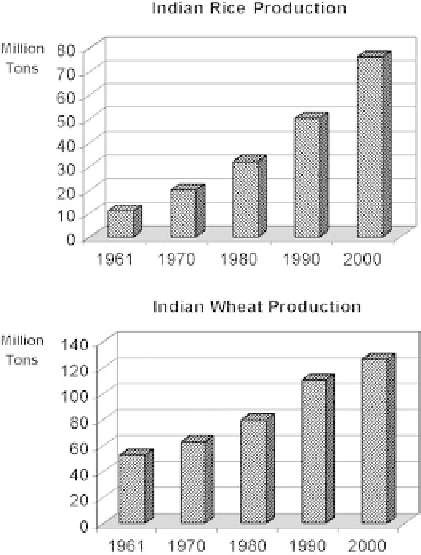Agriculture Reference
In-Depth Information
agriculturalist. Dr. Borlaug received the Nobel Prize for Peace in 1970 for his contri-
bution
to
the
so-called
Green
Revolution.
We
will
examine
that
Green
Revolution briefly.
Prior to the 1800s increases in food production were brought about by expanding
the cultivated area. Agricultural production was managed by farmers with only minor
intervention by other trades. Starting in the mid-1800s Justus von Leibig laid down a
basic theoretical foundation for plant nutrition, and Jean-Baptiste Boussingault devel-
oped the basis for scientific crop production. Superphosphate fertilizer had been pro-
duced in England, and Chilean nitrates had started to arrive in Europe and North
America. This led to the development of other chemical fertilizers. The rediscovery
of Gregor Mendel's work on genetics started the field of crop improvement. The com-
bination of these developments in the early 1900s started European and North Amer-
ican crop yields on a steady increase that has not yet stopped.
In spite of these breakthroughs benefiting temperate region farmers, tropical regions
were nearly untouched. Crop and animal production remained close to subsistence
levels in spite of rapidly increasing populations. Part of the reason for this difference
was that specific varieties and fertilizer practices were not suitable for tropical areas.
Starting in the 1960s scientific production techniques were developed for wheat
and rice in tropical areas. The results of these new techniques can be seen in
Figure 11.1. Since 1961 there have been steady and significant increases in the
production of wheat and rice, two staple foods of India.
6
Figure
11.1.
Indian rice and wheat production since 1961.









